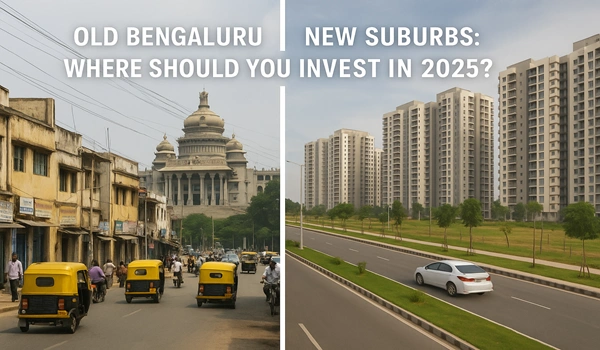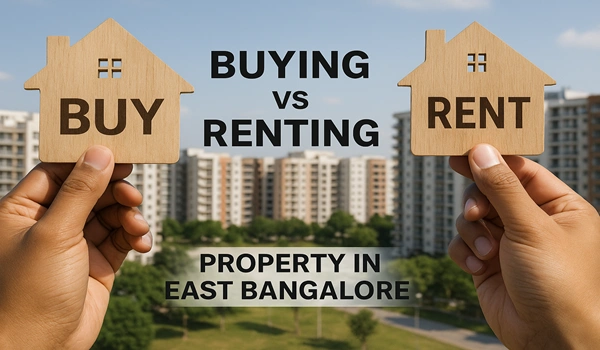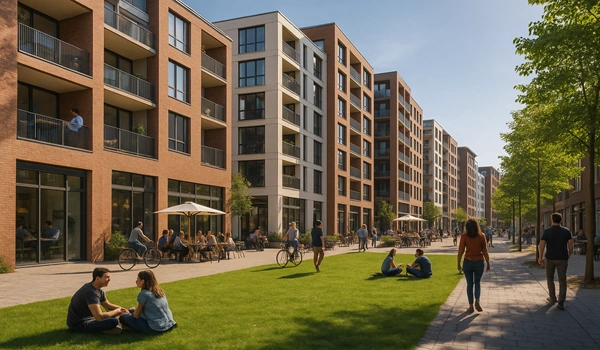Old Bengaluru vs New Suburbs: Where Should You Invest in 2025?

Bangalore‘s real estate market continues to expand in multiple directions, offering investors a wide range of choices between its historic core and fast-growing suburbs. The debate between Old Bengaluru and emerging zones like Sarjapur Road, Kodathi Village, and other suburban belts has grown more relevant as urban development spreads across the city’s periphery.
Choosing the right investment destination depends on several factors, including infrastructure, appreciation potential, lifestyle amenities, and connectivity. Both regions have distinct advantages, but 2025 presents a unique moment where newer suburbs are starting to match, and in some cases, surpass the appeal of legacy neighborhoods.
Old Bengaluru: Character and Central Access
Old Bengaluru includes localities such as Indiranagar, Jayanagar, Malleswaram, and Koramangala. These areas are known for their established infrastructure, tree-lined roads, traditional homes, and premium retail zones.
Strengths of Old Bengaluru:
- Established social infrastructure with reputed schools, hospitals, and commercial spaces
- Strong rental income potential due to centrality and demand from working professionals
- Well-developed civic amenities and mature neighbourhood planning
- High resale value in select micro-markets
However, Old Bengaluru faces several challenges that influence new investment decisions:
- Limited availability of new land parcels, leading to vertical, high-density developments
- Traffic congestion and limited scope for road widening or infrastructure upgrades
- Higher property prices, which may limit future appreciation potential
- Limited scope for integrated, gated townships due to space constraints
New Suburbs: Growth, Scale, and Lifestyle
New suburbs around Bangalore are seeing tremendous traction. Areas like Sarjapur Road, Whitefield Extension, and Devanahalli are now home to large residential communities, global IT campuses, and new infrastructure corridors.
Sarjapur Road in particular has become a key growth driver. Located in the southeastern part of the city, it connects seamlessly to major IT parks, the Outer Ring Road, and newer employment clusters. Within this belt, Kodathi Village has emerged as a promising micro-market due to its proximity to workplaces, access to future metro stations, and relatively peaceful environment.
Reasons Suburban Investment is Gaining Ground:
- Lower land costs, allowing for better appreciation potential
- Availability of modern gated communities with lifestyle amenities
- Integration of green spaces, wide roads, and smart infrastructure in new layouts
- Metro and road connectivity projects planned for 2025 and beyond
- Increasing interest from both investors and end-users due to pricing advantage
Birla Evara: A Strategic Choice in the Suburbs
Developments such as Birla Evara, located in Kodathi Village off Sarjapur Road, reflect the shift in buyer and investor preference. Spread across a large land parcel with thoughtful planning, it offers a blend of modern living, open landscapes, and proximity to Bangalore’s IT and education hubs.
Projects like Birla Evara benefit from:
- Master-planned communities with security, wellness features, and open spaces
- Accessibility to schools, hospitals, and tech parks within a short commute
- Strong potential for value appreciation as infrastructure matures
Both Old Bengaluru and the newer suburbs present valuable opportunities in 2025, but their roles in the market are evolving. While Old Bengaluru retains its charm and central convenience, the suburbs are becoming the future face of Bangalore’s real estate. With better infrastructure planning, larger community layouts, and competitive pricing, suburban areas like Sarjapur Road and Kodathi Village are becoming preferred destinations for long-term investments.
Real estate success in 2025 will depend on identifying growth corridors early, aligning with infrastructure timelines, and choosing projects that combine location with livability.





